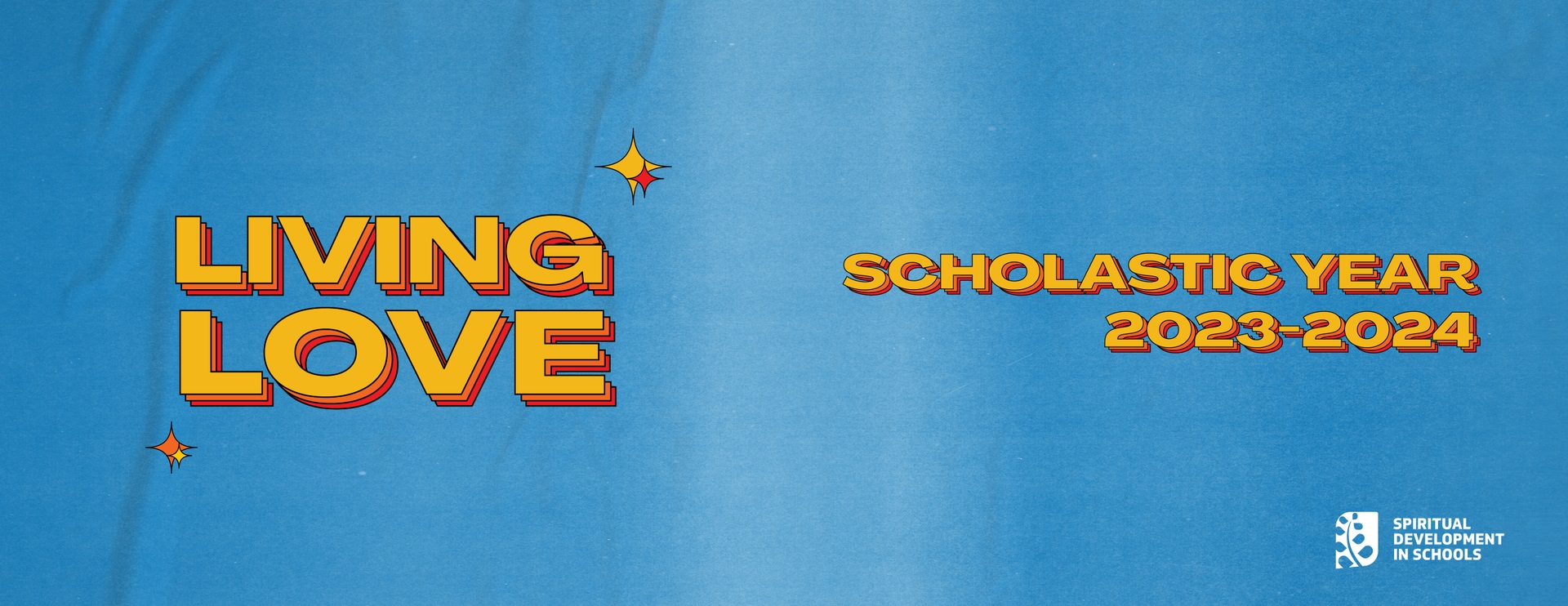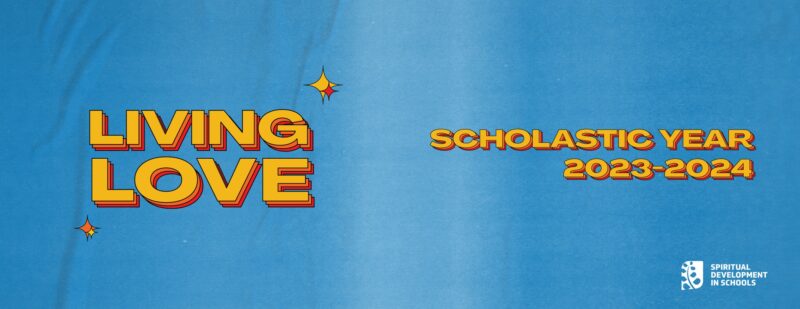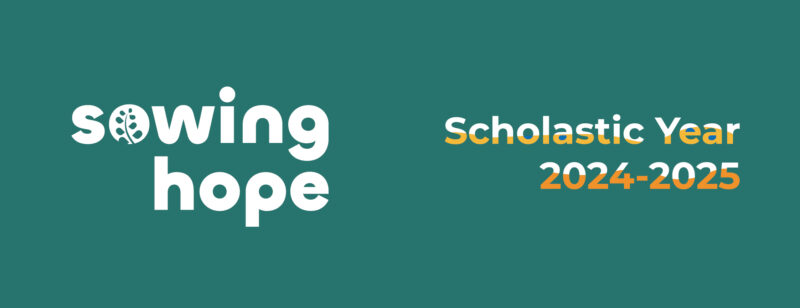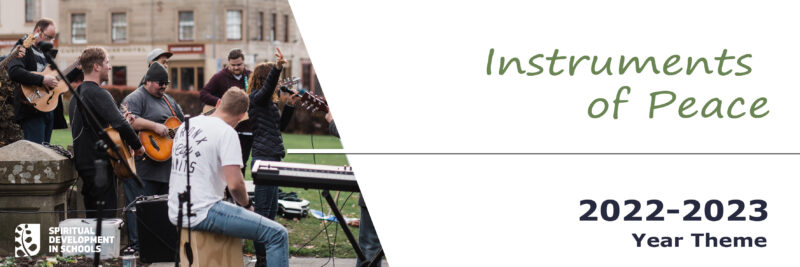These three sessions dive deep into what it means to live out mercy and forgiveness in real life. We get to see how being merciful and forgiving, just like God is to us, makes life richer, brings us closer to God, and gives us fresh starts.
Ages
- Early Years
- Primary Years

Welcome and explore these three sessions to share them with children attending early (Year 1- Year 3) and primary years (Year 4 – Year 6).
These sessions are accompanied by several resources, including:
- A PowerPoint presentation for early years and primary years
- the script of the session with suggested answers
- A handout to be used during the session
Before the session, it is important to download the material for each session and adapt it for the students in your school. The material is found on the right side of the screen, or if you’re using a smartphone, continue to scroll down. If you have any queries, do not hesitate to contact us.
Ngħixu l-Imħabba Permezz tal-Ħniena u l-Maħfra
Għan Ewlieni: It-tfal jirriflettu kif matul iż-żmien tar-Randan niftakru kemm Ġesù jħobbna u kemm hu ħanin magħna kull darba li jaħfrilna dnubietna. Aħna għandna nimxu wara l-eżempju tiegħu u nuru ħniena mal-oħrajn bħalma nixtiequ li ħadd ieħor juri ħniena magħna.
Snin: Bikrin u Primarja
L-istudenti se:
- Jifhmu x’inhuma atti ta’ ħniena.
- Jagħrfu minn storja liema kienu l-atti ta’ ħniena.
- Jaħsbu kif jistgħu jagħmlu atti ta’ ħniena fil-ħajja ta’ kuljum.
- Japprezzaw kif permezz tal-ħniena aħna: nuru li aħna tfal ta’ Alla u nressqu lil oħrajn iktar viċin t’Alla.
Ħin: 30 min
Riżorsi:
- PowerPoint Presentation – Sessjoni 1 Primarja/Bekrin
- Karta għal kull grupp biex jiktbu t-tfal fuqhom waqt xogħol ta’ gruppi.
- Ħendawt: Nibqa’ Viċin Alla Jig-Saw (għal kull student)
- Lapsijiet/kuluri
- Whiteboard (jekk trid)
Merħba u mument ta’ talb: Ibda billi tilqa’ lil kulħadd, ssellem l-SLT u l-edukaturi u tintroduċi lilek innifsek. (1 slide) Kompli b’mument ta’ talb fejn kulħadd iżomm is-skiet, jekk hu possibbli b’għajnejh magħluqin, u jsiru xi eżerċizzi ta’ nifs fil-fond u bil-mod biex wieħed jikkalmaw. L-animatur jista’ jitlob b’dit-talba, “Ejjew niftakru li qegħdin fil-preżenza tal-Mulej. Ejjew nirringrazzjawh talli laqqagħna hawn flimkien illum.” (Pawża ta’ silenzju)
Kulħadd irodd is-salib.
L-Ewwel Parti: Introduzzjoni Diskussjoni qasira (2 min)
- Fit-2 slide ibda diskussjoni qasira fuq x’inhu s-Samaritan it-Tajjeb? – (jekk ma jafux xi tfisser saqsi: Xi tfisser il-kelma ‘Ħniena’? Xi tfisser meta tkun ħanin? (li taħfer, li tagħder, li tħenn, li tkun tolleranti, paċenzjuż.)
- Ara x’jafu fuq is-suġġett. Jekk ma jafu xejn spjega li dak in-nhar huma ser jiskopru xi tfisser tkun is-Samaritan it-Tajjeb.
- Għid lill-istudenti li se jaraw u jisimgħu storja tas-Samaritan it-Tajjeb (3 slide) – spjega minn fejn ġie l-isem Samaritan (kien poplu li kienu jgħixu fi żmien Ġesù imma l-Lhud ma kellhomx rapporti tajbin magħhom u għalhekk kienu miġġildin) u spjega xi tfisser il-kelma parabboli (stejjer li kien jivvinta Ġesù biex jgħallem lin-nies).
It-Tieni Parti: Storja (5 min)
Fit-3 slide urihom l-istorja tas-Samaritan it-Tajjeb.
Fl-aħħar iddiskuti mal-istudenti liema kienu l-atti ta’ ħniena li jidhru fil-vidjow:
- Il-ġenerożità kbira li wera s-Samaritan it-Tajjeb ma’ xi ħadd li ma jafx u li kien Lhudi (l-għedewwa tiegħu)
- Dak it-tifel twajjeb li għalkemm kien sejjer tard għal-lezzjoni xorta waqaf biex jgħin lit-tifel li waqgħulu l-kotba mal-art.
It-Tielet Parti: Xogħol fi gruppi/ brainstorming (10 mins)
- Fir-4 slide għid l-istudenti jingħaqdu fi gruppi ta’ 4 u jiddiskutu l-mistoqsija: Kif nistgħu inkunu bħas-Samaritan it-Tajjeb fil-ħajja tagħna ta’ kuljum? Agħti karta lil kull grupp sabiex jiktbu l-ideat tagħhom.
- Wara isma’ dak li kiteb kull grupp. Jekk hemm whiteboard, ikteb xi ideat li jgħidu t-tfal biex tagħti importanza lil dak li jgħidu.
- Infurmahom li fl-islide li jmiss se jaraw vidjow ieħor u li wara se tiddiskutuh flimkien. L-istorja isimha The Troll Bridge.
Ir-Raba’ Parti: Storja (7 min)
- Fil-5 slide uri l-istorja ta’ The Troll Bridge (5 min)
- Fis-6 slide iddiskuti dawn il-mistoqsijiet magħhom: (2 min)
- Liema atti ta’ ħniena osservajtu? (imħabba u paċenzja).
- X’wasslu l-imħabba u l-paċenzja? (It-troll inbidel f’ kreatura aħjar, sar twajjeb u paċenzjuż ma’ ħaddieħor).
Il-Ħames Parti: Konklużjoni Ħandowt (5 mins)
Ikkonkludi billi tispjega li permezz tal-atti tagħna ta’ ħniena aħna:
- Nuru li aħna tfal ta’ Alla u
- Ngħinu lill-oħrajn jersqu viċin Alla.
Fis-7 slide, agħti l-ħandowt: Nibqa’ Viċin Alla Jig-Saw:
Istruzzjonijiet:
- Fejn hu immarkat, pinġi jew ikteb wieħed jew iktar mill-atti ta’ ħniena li semmejna llum u li bi ħsiebek tagħmel inti f’ħajtek. Fil-parti l-oħra ikteb ismijiet ta’ nies li taf u li ma tafx.
- Agħti kulur imma ħu ħsieb li l-kliem jibqa’ jidher. Żommha d-dar fil-kamra tiegħek biex tfakkrek biex tagħmel atti ta’ ħniena matul il-ħajja tiegħek.
Mument ta’ talb: (7 slide) Spiċċa b’mument ta’ talb fejn kulħadd iżomm għajnejh magħluqin jekk possibbli bi ftit eżerċizzju ta’ nifsijiet biex wieħed jikkalma. L-għalliem reliġjuż imbagħad jgħid “Ejjew niftakru li qegħdin fil-preżenza tal-Mulej. Ejjew nużaw dan il-mument ta’ skiet biex niftakru fl-atti ta’ ħniena li tgħallimna dwarhom illum u ejja nkellmu lil Alla fuqhom.”
Spiċċaw bir-radd tas-salib.
L-istudenti se:
- Jifhmu kif permezz ta’ atti ta’ ħniena aħna ngħixu iktar kuntenti għax inferrħu lil ħaddieħor u dan iferraħ lilna.
- Jitgħallmu li l-maħfra hija att ta’ ħniena.
- Jitgħallmu l-importanza u l-konsegwenzi tal-maħfra.
Ħin: 30 min
Riżorsi:
- PowerPoint Presentation – Sessjoni 2 Primary
- Handowt: Sebgħa u Sebgħin Darba HO (waħda għal kull student)
- Lapsijiet/kuluri
Merħba u mument ta’ talb: Ibda billi tilqa’ lit-tfal, issellem ‘il SLT u l-edukaturi u tintroduċi lilek innifsek. (1 slide)
Kompli b’mument ta’ talb fejn kulħadd iżomm is-skiet, jekk hu possibbli b’għajnejh magħluqin, u jsiru xi eżerċizzi ta’ nifs fil-fond u bil-mod biex wieħed jikkalmaw. L-animatur jista’ jitlob b’dit-talba, “Ejjew niftakru li qegħdin fil-preżenza tal-Mulej. Ejjew nirringrazzjawh talli laqqagħna hawn flimkien illum.” (Pawża ta’ silenzju) Kulħadd irodd is-salib.
L-Ewwel Parti: Introduzzjoni Diskussjoni (5 min)
Uri t-2 slide u ddiskuti dawn il-mistoqsijiet:
- X’qed tara fir-ritratti? Għaliex? (ġenitur iċanfar lit-tifel/tfal għaliex saret xi azzjoni mqarba.)
- Kif tħossok meta l-ġenituri tiegħek jaħfrulek meta tkun imqareb id-dar? (iktar kuntent, tħossok ħieles u ħafif, maħbub).
- Għaliex il-ġenituri tiegħek jaħfrulek? Iddiskuti dawn il-punti li għandhom joħorġu:
- biex ikollok ċans tieqaf u tirrifletti fuq dak li għamilt;
- ċans biex terġa’ tibda;
- titgħalliem kif tagħmel deċiżjonijiet tajbin;
- tpatti tal-ħsara li għamilt.
- Ikkonkludi billi tgħid li jekk wieħed irid li ħaddieħor jaħfirlu, mela huwa jrid jibda jaħfer l-ewwel. Jekk wieħed irid ċans ieħor biex jirranġa dak l-iżball, mela għaliex ma nagħtux ċans lil ħaddieħor?
- Spjega li fl-islide li jmiss, se jerġgħu jiltaqgħu mal-puppets. Dawn se jitkellmu fuq il-ħniena u wara se juruna storja li se tiddiskutu flimkien. Din jisimha The Golden Stones.
It-Tieni Parti: Storja (10 min)
Fit-3 slide urihom il-vidjow tal-Puppets u l-istorja ta’ The Golden Stones. Wara li jaraw il-vidjo, iddiskuti l-mistoqsija: Liema atti ta’ ħniena jidhru fl-istorja?
- maħfra
- li tagħti ċans għal darba oħra
- iddiskuti t-tajjeb li ħareġ meta taw ċans (il-karattri għexu ħajja aħjar).
It-Tielet Parti: Ħandowt (10 mins)
Fir-raba’ slide, ibda x-xogħol tal-ħandowt billi tintroduċiha b’din il-mistoqsija:
- Għid lill-istudenti li darba kien hemm xi ħadd li saqsa lil Ġesù kemm-il darba għandna naħfru lil xulxin. Saqsi lill-istudenti jekk jafu x’kienet ir-risposta ta’ Ġesù? Jekk ma jafux qassam il-Ħandowt Sebgħa u Sebgħin Darba u qabbad lil xi ħadd jaqra għal kulħadd il-parti ta’ fuq fejn hemm silta mill-Bibbja. Fi ftit ħin iddiskuti x’jaħsbu dwar is-silta.
- Ħajjar lill-istudenti biex jaħdmu l-ħandowt u jsibu l-parir siewi li fiha. (Galadarba Alla ħafirlek, hekk int ukoll għandek taħfer).
Ir-Raba’ Parti: Konklużjoni Kant (3 min)
Fl-aħħar parti semmalhom il-kanzunetta Forgiveness fuq il-ħames slide. L-istudenti jistgħu jkantaw magħha u ħeġġiġhom jaħsbu fuq il-kliem li qed jaqraw.
Mument ta’ talb: Spiċċa b’mument ta’ talb fejn kulħadd iżomm għajnejh magħluqin, jekk hu possibbli bi ftit eżerċizzju ta’ nifsijiet bil-mod u fil-fond biex wieħed jikkalma. (6 slide) L-għalliem reliġjuż imbagħad jgħid “Ejjew niftakru li qegħdin fil-preżenza tal-Mulej. Ejjew nużaw dan il-mument ta’ skiet biex nitolbu lil Alla jagħtina l-kuraġġ biex naħfru lil ħaddieħor.” Spiċċaw bir-radd tas-salib.
L-istudenti se:
- Jitgħallmu kif Alla huwa dejjem lest biex jaħfrilna bħal missier ħanin.
- Jifhmu li meta nieqfu biex nirriflettu fuq l-azzjonijiet tagħna u meta nitolbu maħfra, aħna nkunu mogħtija ċans ieħor biex nieħdu deċiżjonijiet aħjar fil-ħajja tagħna u ċans biex intejbu l-ħsara li nkunu kkawżajna.
- Jkollhom ċans jaħsbu fuq xi għemejjel ħżiena li jkunu wettqu, jitolbu maħfra lil Alla u jaħsbu kif jistgħu jpattu għall-ħsara li jkunu wettqu.
Ħin: 30 min
Riżorsi:
- PowerPoint Presentation – Sessjoni 3 Primarja jew Bikrin
- Ħandowt: Il-Maħfra (waħda għal kull grupp ta’ 3 studenti).
- Strixxi tal-karti kkuluriti (aqta’ 5 strixxi minn kull karta A4 għat-tul). Strixxa waħda għal kull student.
- Lapsijiet/kuluri
- Stapler 1
Merħba u mument ta’ talb: Ibda billi tilqa’ lit-tfal, issellem ‘il SLT u l-edukaturi u tintroduċi lilek innifsek. (1 Slide)
Kompli b’mument ta’ talb fejn kulħadd iżomm is-skiet, jekk hu possibbli b’għajnejh magħluqin, u jsiru xi eżerċizzi ta’ nifs fil-fond u bil-mod biex wieħed jikkalmaw. L-animatur jista’ jitlob b’dit-talba, “Ejjew niftakru li qegħdin fil-preżenza tal-Mulej. Ejjew nirringrazzjawh talli laqqagħna hawn flimkien illum.” (Pawża ta’ silenzju)
Kulħadd irodd is-salib.
L-Ewwel Parti: Introduzzjoni Diskussjoni (5 min)
Ibda billi tfakkar x’intqal fis-sessjoni ta’ qabel dwar li naħfru lil xulxin u li b’hekk inkunu qed nagħtu ċans biex intejbu l-ħsara li jkun sar. Iddiskuti mal-istudenti mistoqsijiet bħal dawn: (slide 2)
- Kemm-il darba jaħfrilna Alla? (dejjem jekk veru nkunu niedma minn dak li għamilna).
- Għaliex Alla jaħfrilna? (l-istess raġunijiet il-għala naħfru lill-oħrajn: biex inpattu tal-ħsara, jkollna ċans ieħor sabiex darb’ oħra nagħmlu deċiżjonijiet aħjar).
It-Tieni Parti: Storja (10 min)
Fit-3 slide uri l-istorja tal-Iben il-Ħali. Wara ddiskuti dawn il-mistoqsijiet:
- Fl-aħħar tal-istorja l-missier kien irrabjat jew kuntent li l-iben mar lura d-dar? (ferħan ħafna)
- Għaliex? (L-iktar ħaġa li kien jinteressah lil missieru kien li l-iben mar lura niedem u li tgħallem li fil-ħajja għandek tagħmel deċiżjonijiet għaqlin.)
It-Tielet Parti: Ħandowt (10 mins)
Fit-4 slide uri l-Ħandowt: Il-Maħfra li l-istudenti jridu jiddiskutu u jaħdmu flimkien fi gruppi ta’ 3. Agħti karta lil kull grupp. Huma jridu jimmarkaw l-istampi f’ordni li tagħmel sens.
- Wara 5 min erġa’ iġbor lil kulħadd flimkien u ddiskuti l-ordni li tawhom. Fi ftit ħin spjega l-importanza ta’ kull pass. (M’hemmx ordni waħda speċifika kif għandhom jiġu speċjalment l-aħħar żewġ stampi – meta t-tifel jkun qed jitlob u meta t-tifel jgħannaq lil ommu.)
Ir-Raba’ Parti: Konklużjoni Attività: Katina ta’ Maħfra (3 min)
Bħala konklużjoni għamlu l-attività: Katina ta’ Maħfra (5 slide)
Istruzzjonijiet:
- Agħti strixxa karta kkulurita lil kull student.
- L-istudenti jieqfu jaħsbu f’xi ħaġa ħażina li jkunu għamlu u jiktbu talba ta’ maħfra lil Alla fuq l-istrixxa tal-karti.
- Għidilhom jaħsbu f’modi kif jistgħu jdawru f’xi ħaġa sabiħa l-ħsara li jkunu għamlu, eżempju, irrabjajt/issuppervjajt mal-ġenituri u allura nista’ npinġilhom stampa sabiħa u nitlobhom maħfra.
- Għin l-istudenti jiffurmaw katina bl-istrixxi karti ta’ kulħadd bl-istapler. Din il-katina ta’ maħfra tista’ titwaħħal fil-klassi u mbagħad tiġi offruta waqt il-quddiesa li jmiss.
Mument ta’ talb: (6 slide) Spiċċa b’mument ta’ talb fejn kulħadd iżomm għajnejh magħluqin, jekk hu possibbli bi ftit eżerċizzju ta’ nifsijiet bil-mod u fil-fond biex wieħed jikkalma. L-għalliem reliġjuż imbagħad jgħid “Ejjew niftakru li qegħdin fil-preżenza tal-Mulej. Ejjew nirringrazzjawh talli għaddejna dan il-ħin flimkien u tgħallimna ħafna affarijiet importanti biex ngħixu ferħanin.”
Spiċċaw bir-radd tas-salib. Saqsi lill-istudenti liema kienu l-aktar partijiet tas-sessjonijiet li għoġbithom u li laqtithom.
Living Love through Mercy and Forgiveness
Main Aim: Children will reflect on how Lent is a time when we remember Jesus’ Love for us and how merciful he is with us whenever he forgives our wrongdoings. Like him, we too are encouraged to be merciful just as we would want others to be merciful with us.
Year Group: Early & Primary Years
Students will:
- Understand what acts of mercy are.
- Be able to identify an act of mercy from a story.
- Think of ways in which one can be merciful in everyday life.
- Value the fact that through our acts of mercy, we show that we are children of God and help others move closer to God.
Time: 30 min
Resources:
- PowerPoint Presentation – Session 1 Primary
- Plain paper for group work
- Handout: Staying Close Jig-Saw (one per student)
- Pencils/Pens/Crayons
- Whiteboard (optional)
Welcome and a moment of prayer: The head, SLT, or educator who is administering the assembly welcomes the students by saying good morning. (slide 1) Start with a moment of prayer where all are silent with their eyes closed if possible and with some slow breathing exercises to calm down if necessary. The religious educator then says the words “Let us remember, that we are in the presence of God. Let us thank God for bringing us together today.” Continue with the sign of the cross.
Step 1: Introduction:
Short Discussion (2 min)
- On slide 2 do a short discussion on what is a good Samaritan – (if they do not know what that means ask: What does it mean to be merciful? (Showing forgiveness, being compassionate, taking pity, being tolerant and patient.)
- See what they know about the subject. If they do not know what it is, explain that today they will find out what it is.
- Tell the students that they will now watch the story of the good Samaritan (slide 3) – Explain from where the name Samaritan came and explain what a parable is if the children do not know. (The Samaritans were a group of people like the Jews, but these two races did not like each other very much). (Parables are stories invented by Jesus to teach a lesson).
Step 2: Storytelling (5 min)
- Slide 3 shows them the story of the Good Samaritan by clicking anywhere on the screen. Finally, discuss the acts of mercy mentioned in the video: The Good Samaritan’s generous help to someone he didn’t even know and who was an enemy. The boy who was late for his lesson but who nonetheless helped the other boy pick up the books that had fallen on the floor.
Step 3: Group work/ brainstorming (10 mins)
- On slide 4, ask the students to join in groups of 4 and discuss the question: How can we be Good Samaritans in our everyday lives? Give a sheet of paper to each group to write down their ideas. (5 min) At the end, listen to what each group wrote. If available, write some ideas on a whiteboard to give importance to their contributions. (5 min) Tell them that in the next slide, they will watch another video which they will discuss called the Story of The Troll Bridge.
Step 4: Storytelling (7 min)
- On slide 5, show the story of The Troll Bridge (5 min)
- On slide 6, discuss by asking the following questions: (2 min)
- What acts of mercy did you observe? (love and patience).
- What did love and patience result in? (The troll changed into a better creature).
Step 5: Conclusion Handout (5 mins)
- Conclude by explaining that through our acts of mercy we:
- show that we are children of God and
- help others get closer to God and/or reconcile with God.
- On slide 7, give out the handout: Staying Close to God Jig-Saw.
Instructions:
- On the marked part, write or draw one or more acts of mercy discussed together which you intend to do yourself. On the other part write names of people you know and others you do not. Colour each section lightly not to cover the writing. Keep it in your room at home to remind you of how you can show mercy in your life.
A moment of prayer: In slide 8, end with a moment of prayer where all are silent with their eyes closed if possible and with some slow breathing exercises to calm down if necessary. The religious educator then says, “Let us remember that we are in the presence of God. Let us take a few moments of silence to think about the acts of mercy we learnt about today and talk to God about them.” End with the sign of the cross.
Students will:
- Understand how acts of mercy help us live happier lives.
- Learn that forgiveness is an act of mercy.
- Learn the importance and consequences of forgiveness.
Time: 30 min
Resources:
- PowerPoint Presentation – Session 2 Primary
- Handout: Seventy Times Seven HO (one per student)
- Pencils/Crayons
Welcome & a moment of prayer: Start by welcoming all the students and staff. (slide 1)
Continue with a moment of prayer where all are silent with their eyes closed if possible and with some slow breathing exercises to calm down if necessary. The religious educator then says the words, “Let us remember that we are in the presence of God. Let us thank him for bringing us together today!” End with the sign of the cross.
Step 1: Introduction: Discussion (5 min) Show slide 2 and ask the following questions:
- What are you seeing in the picture? Why? (Father scolding his children because they must have done something they shouldn’t have.)
- Did this situation ever happen to you?
- How do you feel when your parents forgive your misbehaviours at home? (relieved, happier, loved)
- Why do your parents forgive you? Discuss: a chance to stop and reflect, a chance to start again, learn to make better choices, make amends etc.
- If you want others to forgive you, then you need to start forgiving others yourself. If you want a second chance to make amends, so why not give others one too? Explain that in the next slide, they will meet the puppets again, who will talk about mercy and that they will show a story called The Golden Stones, which you will then discuss together.
Step 2: Storytelling (10 min)
- In slide 3 show them the video about the Puppets and the story of The Golden Stones. After watching the video discuss the question: What acts of mercy were shown in the story?
- forgiveness
- giving a second chance
- discuss the good that came out of giving a second chance (the characters lived a better life).
Step 3: Handout (10 mins) In slide 4, start the handout activity by introducing it with the following query:
- Tell the students that someone once asked Jesus how many times we should forgive others. Ask if anyone knows what Jesus had replied. If they do not know, give out the handout Seventy Times Seven and ask someone to read the top part of the handout to the group. Briefly discuss what they think about that answer.
- Encourage the students to work out the handout by solving the code and finding the good advice (As the Lord has forgiven you, so you also must forgive.) (Ġaladarba Alla ħafirlek, hekk int ukoll għandek taħfer).
Step 4: Conclusion Singing (3 min) Conclude the session with a song on Forgiveness on slide 5. Ask the students to sing along with the song and to think about the words they read as they sing.
A moment of prayer: End with a moment of prayer (slide 6) where all are silent with their eyes closed if possible and with some slow breathing exercises to calm down if necessary. The religious educator then says “Let us remember, that we are in the presence of God. Let us think of a prayer to God to give us the courage to forgive others.” Students can share their prayers aloud if they want to. End with the sign of the cross.
Students will:
- Learn that God is always ready to forgive us like a loving father.
- Understand that by reflecting on our actions and by asking for forgiveness, we are given another chance to make better decisions in our lives and make amends for our wrongdoings.
- Have a chance to think about some wrong behaviour, ask God for forgiveness, and think of ways how to make amends.
Time: 30 min
Resources:
- PowerPoint Presentation – Session 2 Primary
- Forgiveness Handout (one per group of 3)
- Colourful thin paper strips (cut 5 strips out of an A4 sheet, lengthwise). One each.
- Pencils/Crayons
- 1 stapler
Welcome and a moment of prayer: Start by welcoming the students and all teaching staff present. Introduce yourself if need be. (slide 1) Continue with a moment of prayer where all are silent with their eyes closed if possible and with some slow breathing exercises to calm down if necessary. The religious educator then says the words “Let us remember, that we are in the Holy presence of God. Let us thank Him for always being present in our lives.” Continue with the sign of the cross.
Step 1: Introduction: Discussion (5 min) Start the session by recollecting what was said in the previous session about forgiving others and giving a chance to make amends. Discuss these questions (slide 2).
- How many times does God forgive us? (always if we are sorry for what we did)
- Why does God forgive us? (same reasons why we forgive others: to make amends, give a second chance, to make better decisions next time).
Step 2: Storytelling (10 min) In slide 3, show the students the story of the prodigal son. At the end, discuss the following questions:
- Was the father angry or happy at the end? (very happy).
- Why? (What mattered to him was the fact that the son returned home repentant and that he learnt how to make better decisions in his life).
Step 3: Handout (10 mins)
- In slide 4, show the students the Forgiveness Handout they now need to work out in groups of 3. Give a handout to each group. The students need to discuss how to mark the pictures in the correct order.
- Then discuss what they concluded as a whole group. Briefly discuss the importance of each step. There is no one correct order especially the last two pictures (when the boy is praying and when he hugs his mother).
Step 4: Conclusion Activity: A Forgiveness Paper Chain (3 min) To conclude, tell the students that they will make a Forgiveness Paper Chain. (slide 5) Instructions:
- Students need to stop a moment, reflect, and write a prayer to God asking for forgiveness for something wrong that they did, on the strip of coloured paper that you give them.
- Think about how you can make the situation better. For example, “I was angry with my parents, so I can draw a nice picture and give it to them while saying sorry.”
- Help the students join the individual strips together with staples. The paper chain can be hung in class and then offered during the next mass.
A moment of prayer: On slide 6, end with a moment of prayer where all are silent with their eyes closed if possible and with some slow breathing exercises to calm down if necessary. The religious educator then says “Let us remember, that we are in the presence of God. Let us thank God for these sessions that we have spent together.” End with the sign of the cross. Invite students to share new things they have learnt and what they liked about the sessions.
Share
Discover more resources



 Malti
Malti English
English
